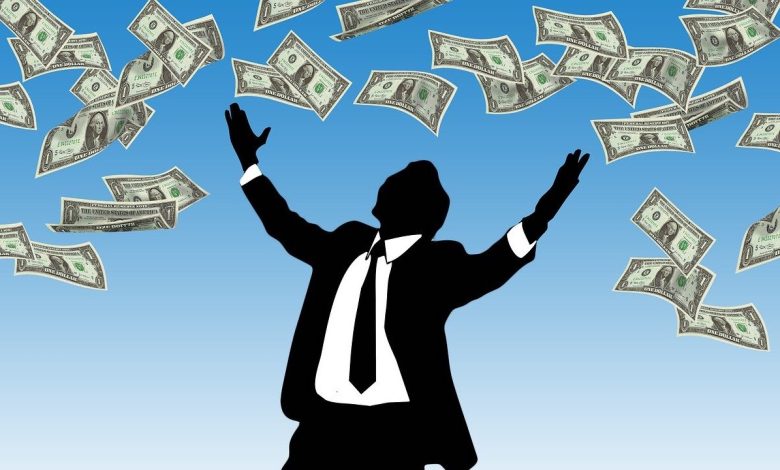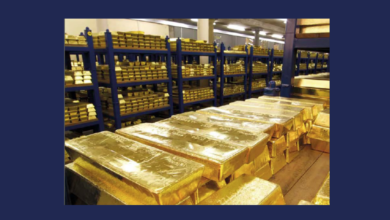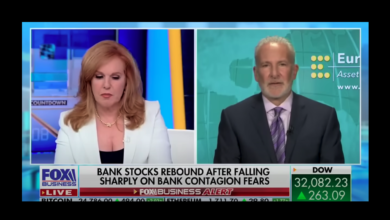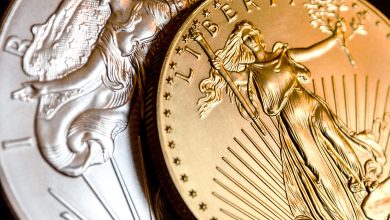Easing Price Inflation Is Transitory

Is price inflation really heading back toward the Federal Reserve’s 2% target?
Most people in the mainstream seem to think so, and the recent drop in the consumer price index (CPI) appears to support this belief. Price inflation has trended downward over the last several months, with the annual CPI falling from a high of 9% last year to just 3% in July. But I don’t think the Fed has won the inflation fight and I don’t believe the central bank’s sanguine inflation outlook is correct.
I think easing price inflation is transitory.
The Fed’s rate hikes and modest balance sheet reduction have succeeded in tightening credit and cooling the economy. This has taken some of the upward pressure off prices. If the Fed could stay this course indefinitely, it might be able to eventually beat price inflation down. But 5.5% interest rates and a small reduction in the balance sheet aren’t enough to counteract nearly 15 years of artificially low-interest rates and a more than $7 trillion expansion of the balance sheet since 2008.
In other words, inflation — an expansion in the money supply — hasn’t gone anywhere. The Fed has just done enough to paper over one symptom of inflation – rising prices. And the moment it goes back to artificially low-interest rates and quantitative easing prices will return to the upward trajectory we saw last year.
And it’s just a matter of time before the Fed goes right back to loose monetary policy. The moment something else breaks in the economy, the Fed will respond predictably with rate cuts and money printing.
Federal Reserve Chairman Jerome Powell has already opened that door. During his post-FOMC meeting press conference in July, he conceded that the central bank would likely start cutting rates before the CPI reaches the 2% target.
The Federal Funds Rate is at a restrictive level now, so if we see inflation coming down, credibly, sustainably, then we don’t need to be at a restrictive level anymore… You’d stop raising [rates] long before you got to 2% inflation and you’d start cutting before you got to 2% inflation, too.”
In fact, Fed monetary policy isn’t really restrictive. During a recent interview on CNBC, Jim Grant pointed out that the Chicago Fed Financial Conditions Index still indicates that the current financial environment is still “easy” even after all of the talk and rate lifting.
So, there’s a difference, as someone said recently, between tightening and tight. And by the standards of the Volker era, monetary policy is not yet tight. And yet, there are undeniable signs of stringency throughout finance.”
So, what we’re seeing today is not the beginning of the end of price inflation, but a temporary reprieve.
In other words, easing price inflation is transitory.
Powell is getting some help with easing prices. One of the main reasons we’ve seen the big drop in CPI is due to a 50% drop in the price of oil between the summer of 2022 and April 2023. But over the last three months, oil prices have gone up about 25%. If oil prices continue this trajectory, it will put significant upward pressure on CPI in the closing months of this year. It will also put another drag on the economy.
And the economy isn’t nearly as strong as a lot of people seem to think.
With much stronger-than-expected second-quarter GDP growth and continued labor market strength, a growing number of people in the mainstream now think the US has escaped the clutches of a recession despite the Fed driving interest rates to the highest level in 16 years. Powell said staff economists at the central bank still project a noticeable slowdown in growth starting later this year, “But given the resilience of the economy recently, they are no longer forecasting a recession.”
But it seems unlikely the US economy can avoid a significant downturn given the fact that the Fed has taken away its lifeblood – easy money. And there are plenty of signs that the economy is getting increasingly shaky. We’ve seen 15 consecutive drops in the Index of Leading Economic Indicators (the most consecutive negative prints since 2007-2008), an inverted yield curve, and a rising number of corporate defaults. Meanwhile, nontraditional metrics such as the cardboard box barometer are flashing recession.
The mainstream is overoptimistic about the trajectory of the economy because they are relying on sketchy government numbers. Not only is there going to be a recession, it will likely be deep and protracted. That will force the Fed to reopen the inflation spigot.
It’s important to wrap your head around just how much the Fed’s easy monetary policy over the last decade-plus has distorted the economy.
Here’s some perspective.
The last time interest rates were this high, the national debt was $5.6 trillion. Today, the national debt stands at $32.7 trillion. A 5.5% interest rate on a $5.6 trillion debt meant interest payments were around $300 billion annually. Today, interest payments are approaching $1 trillion on an annual basis, and there are still a lot of low-interest bonds out there that haven’t matured. As those roll off and are replaced by higher interest Treasuries, interest payments will continue to climb.
When you apply a 5.5% interest rate to a $32 trillion debt, the interest payments rise to $1.8 trillion annually.
The US government appears to be on the verge of a solvency crisis. This is yet another reason the Fed cannot possibly maintain this “high” interest rate environment.
This is indicative of what the Fed has done to the economy. Corporations and individuals are also buried in debt, thanks to a Federal Reserve monetary policy that incentivized borrowing to the hilt. Thanks to the Fed, we’re sitting on a powder keg of debt just waiting to explode.
The bottom line is that the economy needs inflation (money creation) to keep limping along. When the Fed has to start easing again in the face of already high inflation, it will be throwing gasoline on an inflation fire.
Call 1-888-GOLD-160 and speak with a Precious Metals Specialist today!
Buka akaun dagangan patuh syariah anda di Weltrade.
Source link








